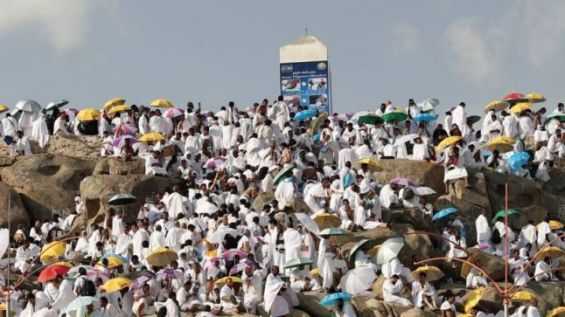The Muslim pilgrimage, known among Muslims as Hajj, will be threatened by future climate change forecasts. A new study by researchers from the Massachusetts Institute of Technology (MIT) reveals that heat stress could pose danger for Muslim pilgrims.
The findings of this paper, published on August 22 in the Journal Geophysical Review Letters, project an «increase in the frequency and intensity of future extreme danger heat stress events in Mecca during Hajj».
Researchers explain that in the coming years the Muslim ritual that attracts millions of pilgrims every year will take place in the «hottest summer months». And as most Hajj rituals require spending from 20 to 30 hours outdoor for five days, the burning sun and the heat would threaten the lives of Hajjis.
MIT professor Elfatih Eltahir and two fellow researchers from the California Institute of Technology stress that the risks «to Hajj participants could be serious this year and next year, as well as when the Hajj, whose timing varies, again takes place in the hottest summer months», reports MIT. Here the researchers also refer to the periods from 2047 to 2052 and from 2079 to 2086.
Countermeasures and restrictions on Hajj
Hajj could be dangerous during these extremely hot summers, also because of the nature of activities carried by Hajjis during that period of the year. The study points at the packed facilities and the big numbers of Hajjis performing the same rituals at the same time. «If you have crowding in a location (…) the harsher the weather conditions are, the more likely it is that crowding would lead to incidents», Eltahir said, referring to deadly stampedes.
In addition to these findings, the study insists on the urgent need of planning and implementing «countermeasures» and «restrictions on participation in the pilgrimage».
The authors of the study indicate that the «factors that shape the vulnerability (of Hajjis during these hot summers) include structural factors such as the capacity of the Hajj facilities and quality of transportation logistics and nonstructural factors such as the age distribution, health, and number of pilgrims».
To the MIT researchers, Saudi Arabia, must think of the «future projected intensity, frequency, and duration of heat stress» when planning Hajj seasons. The study «should help in informing policy choices, including climate change mitigation policies as well as adaptation plans», the researcher said.
The study concludes that a well-studied strategy, such as reducing the number of pilgrims, would reduce the danger climate change and heat stress might have on Hajj and Hajjis during these high-risk decades.





 chargement...
chargement...













